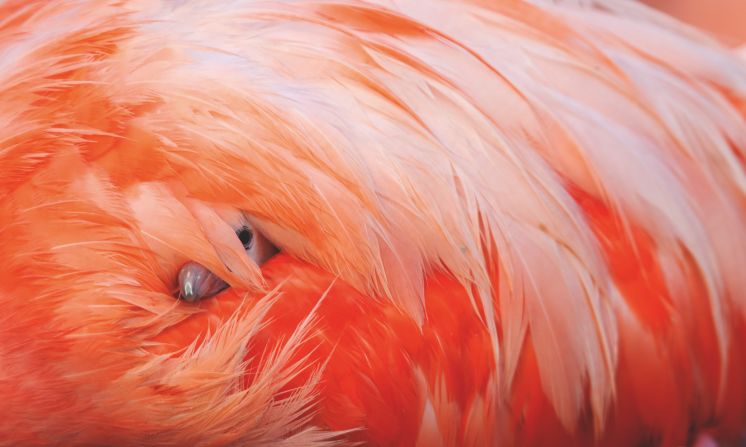
As a child, photographer Claudio Contreras Koob visited the coast of the Yucatán Peninsula, Mexico, with his father every summer. He watched the flamingos in the wetlands behind their holiday home for hours -- and decades later, is sharing his obsession for Mexico's "iconic species" in his new photography book, "Flamingo." Look through the gallery to see more of his striking images.
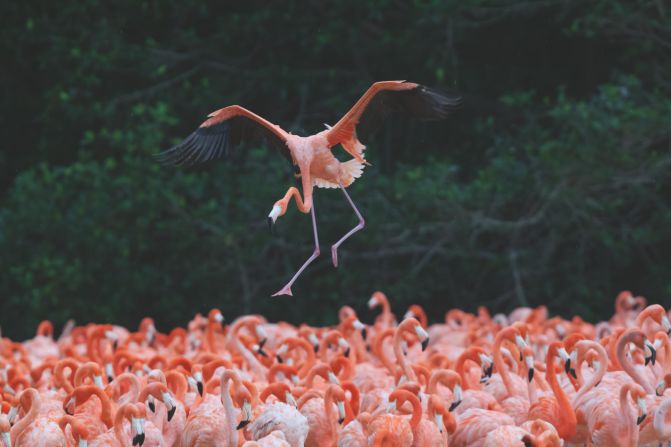
Flamingos are social birds that gather in large groups called a flamboyance, or a colony. Koob spent 10 years gathering the 120 photos for the book, patiently gaining the trust of the birds and photographing them at two reserves in Yucatán: the Ría Celestún Biosphere Reserve, Yucatán (pictured), is one of their favorite feeding sites.
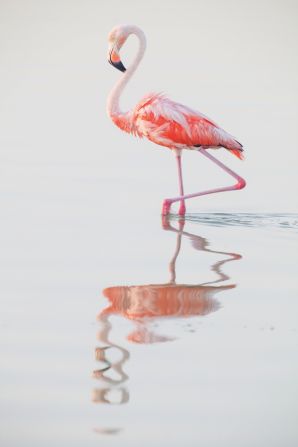
Flamingos get their vivid pink coloring by eating algae and brine shrimp that are rich in carotenoids, a reddish-orange pigment. The intensity of a flamingo's color is an indicator of its health and a signal to potential mates, says Koob.
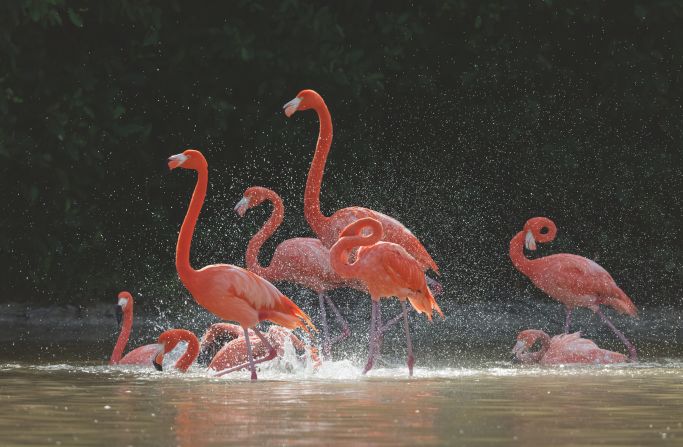
Mexico has taken steps to protect the salty, brackish water and wetlands that the birds live in, and created two reserves: Ría Lagartos where the flamingos nest, and Ría Celestún, an important feeding site.

Flamingos migrate every year, flying mostly at night and sometimes for very long distances says Koob, adding that tagging conducted by Mexico's Flamingo Conservation Program has revealed that the colonies in Yucatán travel to the Bahamas, US and Cuba.
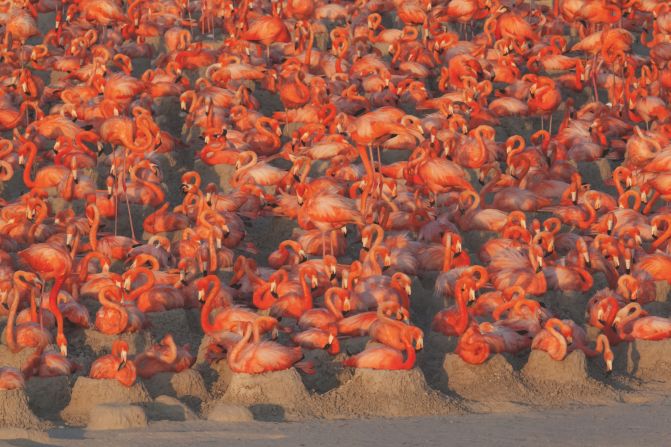
Flamingos build volcano-shaped nests from mud, which can hold one large egg. The birds pictured here are nesting in Ría Lagartos Biosphere Reserve in the Yucatán Peninsula, a favored breeding site. Last year, the National Commission of Natural Protected Areas (CONANP) estimated there were around 15,000 nests at Ría Lagartos.

The eggs are incubated for a month before hatching. Parents recognize their young through the unique sound of its call, and they will not feed any other chicks.

Chicks are keen explorers, says Koob. To keep the chick's in the nest, the adult flamingos try to hold them between their feet.
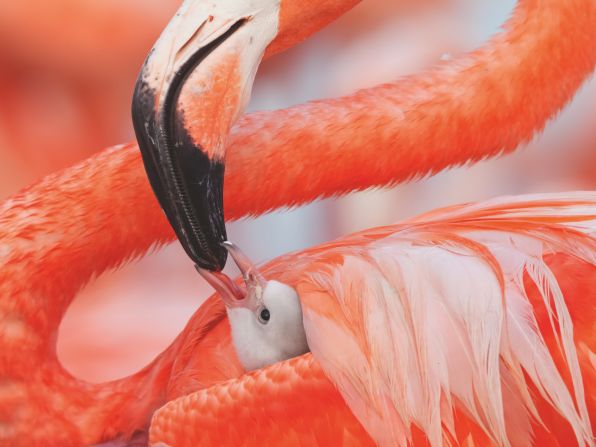
Both male and female flamingos feed their young a substance called "crop milk" which they create in the upper digestive tract. Crop milk has a similar fat and protein content to mammal milk, and has a red hue that will help the chick grow its first pink feathers when it is older.
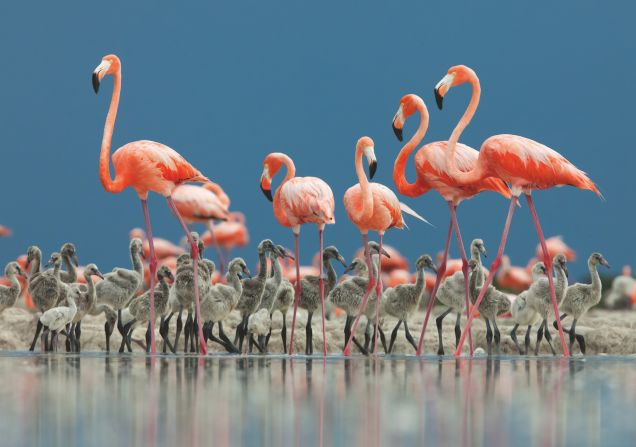
At five to 12 days old, chicks leave the nest and their down feathers begin to turn grey, but they still rely on their parents for food. At around three months old, the chicks' beaks will hook so they can feed themselves, and they start to lose their grey down and grow feathers suitable for flight.
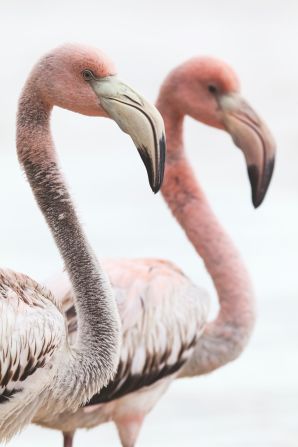
Flamingos take two to three years to fully mature -- these juvenile flamingos at Ría Celestún Biosphere Reserve are still speckled with white feathers, even as their signature pink plumage comes through.


